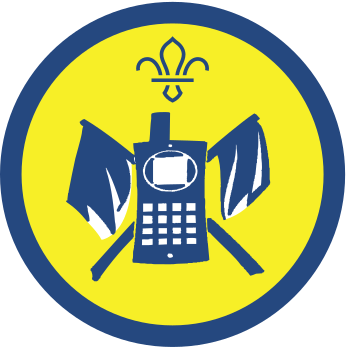Inspector Morse code
You’ll need
- String
- Paper drinking straws
- Scissors
- Small beads or buttons
Before you begin
- You’ll need help with this activity so invite parents or carers.
- Cut the paper straws into pieces 2cm long.
- Cut pieces of string about 30cm long. You’ll need one for each person or pair. Thread a large bead or button onto each one and tie a knot, or use a knot on its own to act as a stopper.
- If anyone has a particularly long name, prepare a longer string for them (or get some smaller beads).
- Get your straw sections and additional beads ready: you’ll need enough for everyone to spell their name in Morse code.
Learn Morse
- The person leading the activity should separate everyone into groups and give each one an adult. Together, each group should look at the ‘Morse code’ sheet.
- The adult in each group should spell out their name as an example.
- Everyone should practise spelling their name, using the ‘Morse code’ sheet to help. They could tap, blink or clap their name.
String spelling
- Everyone should take a piece of prepared string and spell their name in Morse code using the beads to represent dots and the straw sections as dashes.
- When they’re finished, they should tie a knot at the other end. An adult might need to help if it’s fiddly.
The person leading the activity should mix up the strings. - Everyone should work together and become an inspector to decode the names and give everyone their string back.
- The person leading the game could give everyone a special message to decode at the end of the session so they can show off their new skills.
Reflection
This activity introduced everyone to the international system of Morse code, which has been around for almost two hundred years. Learning how to communicate in an emergency is a great survival skill. Well done to everyone – they could celebrate by clapping out their names at the same time using Morse code.
Safety
All activities must be safely managed. You must complete a thorough risk assessment and take appropriate steps to reduce risk. Use the safety checklist to help you plan and risk assess your activity. Always get approval for the activity, and have suitable supervision and an InTouch process.
- Scissors
Supervise young people appropriately when they’re using scissors. Store all sharp objects securely, out of the reach of young people.
Practise tapping, clapping or drawing names before threading the strings or do one name at a time with support. Anyone who is confident can start creating longer phrases or messages.
Support with spellings where needed.
All Scout activities should be inclusive and accessible.
Use Morse code to draw a message for a treasure trail or a challenge.
Everyone can practise their Morse code, and share their opinion, by sending Morse code messages to their leader about any other code activities they’d like to try.
